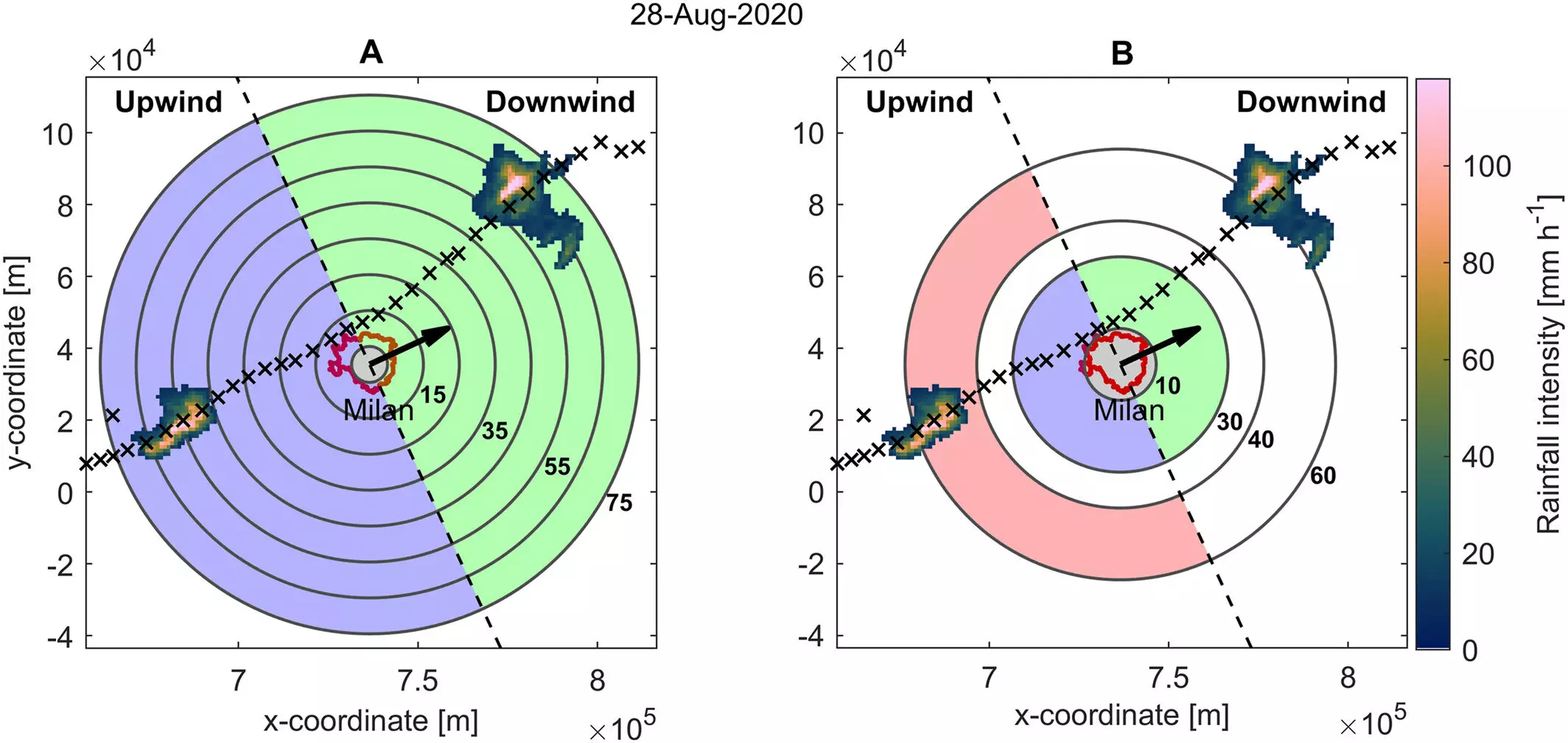As urban centers expand amidst the challenges presented by climate change, understanding the dynamics of rainfall in cities has become paramount. A recent comprehensive study, analyzing data from eight different cities across Europe and the United States, has unveiled critical insights into summer storms and their behavior over urban landscapes. The findings indicate that not only are storms becoming more frequent and intense above cities, but they also behave differently compared to rural areas, significantly impacting flood risk management and urban planning.
The research brings to light how metropolitan areas generate storms that resemble concentrated bursts of rainfall, akin to a fire hose, rather than spreading rain across a broader area. This transformation could have dire implications for urban infrastructure, particularly drainage systems that are not equipped to handle such sudden and severe deluges. The necessity to understand these patterns is becoming increasingly important as the global climate situation deteriorates.
Herminia Torelló-Sentelles, an atmospheric scientist and lead author of the study, emphasizes the correlation between urban growth and the intensification of storm patterns. As cities continue to grow in both population and size, the urgency to accurately quantify the associated flood risks becomes more pronounced. This need is compounded by environmental changes linked to climate change, which can further exacerbate storm severity.
The study makes it clear that larger cities contribute significantly more to rainfall intensity than their smaller counterparts. For city planners, these disparities highlight the necessity of incorporating storm intensity variations into future infrastructure designs. As urban areas become denser, the risks of flood-related disasters grow, necessitating proactive measures in urban drainage planning.
The Mechanisms Behind Urban Storm Generation
Various factors influence how storms are created and intensified in urban environments. One primary aspect is the urban heat island effect; cities generally maintain higher temperatures than their rural surroundings. This increase in temperature can lead to the uplift of warm air, which, as it rises, cools and condenses to form rain clouds. An interesting parallel can also be drawn between city skylines and mountain ranges, both creating environments conducive to the lifting of air masses, resulting in storm formation.
Additionally, the presence of atmospheric aerosol pollutants can also play a complex role. These pollutants may interact with moisture in the air, altering the way precipitation forms and falls. The study carefully analyzed data over seven years, revealing that cities such as Milan, Berlin, London, and Phoenix exhibit unique storm patterns that affect how rainfall is distributed and its overall intensity.
One of the most critical findings of the research is the notable variability in storm behavior among different urban areas. For instance, while many cities experienced stronger bursts of rainfall, Berlin and Charlotte exhibited more evenly distributed precipitation. Other cities like Atlanta saw intensified storms predominantly during the day, whereas Birmingham had its storm activity concentrated at night.
These observations underscore the necessity for city-specific planning strategies. Urban stormwater management cannot be a one-size-fits-all approach; each metropolitan area must evaluate its own unique characteristics and challenges. The differential impacts highlighted by the research demonstrate that adaptation and management plans need to be tailored to the specific patterns and intensities observed in each locality.
As the dual pressures of climate change and urbanization converge, city planners face increased challenges in managing stormwater and mitigating flood risks. The latest findings stress the importance of continuous research on urban storm patterns to develop informed strategies that enhance resilience in cities. Enhanced urban drainage systems, updated infrastructure strategies, and localized adaptation plans stand at the forefront of necessary actions.
Moreover, expanding research to include a more diverse range of cities globally would help in formulating generalized principles applicable to various urban scenarios. Herminia Torelló-Sentelles emphasizes the need for a broader understanding—studying a wider variety of city characteristics will enable planners and scientists to discern which factors most significantly influence a city’s rainfall-modifying potential.
The intersection of rapid urban growth and shifting climate patterns necessitates a renewed focus on understanding and managing storm impacts in cities. Through continued research, thoughtful planning, and a commitment to adaptive strategies, urban areas can better prepare for the storms of tomorrow, safeguarding their communities against the increasingly unpredictable nature of rainfall.


Leave a Reply